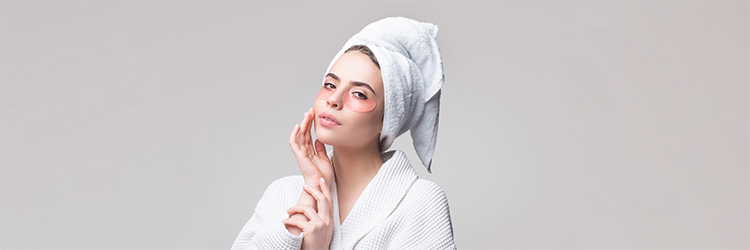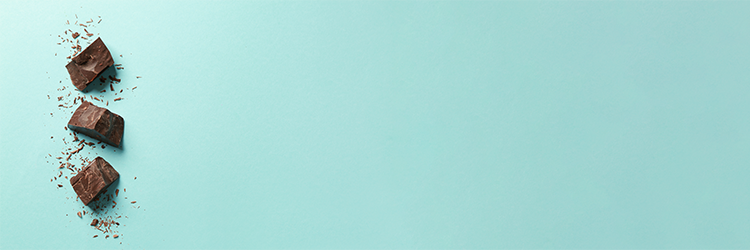
Disclaimer: None of the information in this article constitutes medical advice, and is just the opinion of the writer(s). We recommend that patients follow their doctor’s guidance in regard to prescription medication.
Atomoxetine, sometimes referred to by its full chemical name atomoxetine hydrochloride or atomoxetine HCL for short, is a prescription drug that's FDA-approved to treat attention deficit hyperactivity disorder (ADHD).
The brand-name version of this medication is called Strattera.
But is atomoxetine actually proven in clinical trials to reduce ADHD symptoms? Does the drug cause any side effects? Is it more effective than Adderall? And how do real users rate and describe its effects?
In this article we’ll answer all of these questions and more, as we review clinical studies on atomoxetine to determine whether or not it's effective for ADHD symptoms.
We'll discuss the potential for side effects, compare atomoxetine to other ADHD medications and feature unsponsored patient reviews.
Can Atomoxetine Reduce ADHD Symptoms?
There have been many clinical trials examining the effectiveness of atomoxetine for treating symptoms of ADHD, in both pediatric (children) and adult patient populations.
A published in the Pediatric Drugs journal examined how effective atomoxetine is in children with ADHD, and compared it to other drugs.
The study authors concluded that atomoxetine is more effective than all other ADHD medications in both children and adolescents. Those taking atomoxetine had higher scores for health-related quality of life than the trial participants who were taking placebo (inert) pills.
Atomoxetine has also been extensively studied in adults with ADHD.
A 2004 documented that atomoxetine caused ADHD symptom reductions greater than 28% after 10 weeks of treatment.
Another thorough analyzed patient data from over 3,000 patients with ADHD who took atomoxetine.
The researchers found that atomoxetine was effective on average for treating ADHD.
However, the study authors noted that the medication “has a poor benefit-risk balance for the treatment of adults with ADHD,” because the benefits were mild and the side effects were worse than with placebo treatment.
We will conclude from the available medical literature that atomoxetine is effective for treating ADHD in children, adolescents and adults, which is unsurprising given that it's approved by the FDA for that indication.
Does Atomoxetine Cause Side Effects?
Atomoxetine is required to list a “black box” warning on its .
This is the most severe level of warning issued by the FDA, and indicates a side effect which may be life-threatening.
Atomoxetine's black box warning references that the drug can increase suicidal thoughts in children and adolescents.
A examined the more common side effects of atomoxetine and reported those to be headache, abdominal pain and nausea. These are clearly mild when compared with the suicide risk.
Some cardiovascular side effects were also reported in the above-linked medical review as “common side effects” of the drug: increased heart rate, sinus tachycardia (irregular and fast heartbeat), increased blood pressure, heart palpitations.
Approximately 4% of children and adolescents using atomoxetine experienced an increase in heart rate of greater than 25 beats, which is a significant increase.
Given that atomoxetine may cause such severe side effects in children and adolescents, it may be beneficial for parents to speak with their pediatrician about alternative ADHD medications that do not have an association with suicidal thoughts.
Atomoxetine vs. Adderall
Adderall is a commonly-prescribed ADHD medication, so patients are often curious about which drug is more effective.
Adderall is an amphetamine, and is in a class of drugs called stimulants, which increase activity of the central nervous system and brain. This drug has a different mechanism of action than atomoxetine.
Several clinical trials have directly compared the efficacy of Adderall and atomoxetine.
A 2006 found that the two drugs had similar efficacy, but that the extended release (XR) formulation of Adderall led to greater improvements in ADHD symptoms than atomoxetine.
It’s unsurprising that an XR version of a drug would be more effective, because this drug type tends to have a higher dosage than the standard release version, but this means the drug may have a greater risk of side effects as well.
A published in the Clinical Therapeutics journal found that in children and adolescents who responded poorly to Adderall, switching to atomoxetine improved mental health outcomes and reduced symptoms of ADHD.
Another on Adderall XR and atomoxetine in children with ADHD found that Adderall XR was more effective.
Based on the available research, it appears that Adderall XR (but not regular Adderall) may be slightly more effective than atomoxetine in both children and adults.
However, it may also confer a greater risk of side effects given that XR versions of drugs are often more potent.
Real People Try Atomoxetine
A YouTube creator named "Finding Your Serenity" has a personal review of atomoxetine after one year of use:
A TikTok creator named "borderlessdany" shared side effects that she experienced on atomoxetine:
Patients Rate Atomoxetine
Drugs.com is a website that allows prescription medication patients to rate and review the drugs they're taking.
We cannot verify the accuracy or authenticity of any reviews on this site.
Atomoxetine has been reviewed over 500 times on Drugs.com for treating ADHD, with an average rating of 5.1 out of 10 at the time of updating this article.
The top positive review of atomoxetine is written by a user named “Estefano PPT” who gave the drug a 10/10 rating, and claims that it improved focus:
"it worked like magic on the first day. No side effects. I feel more alert, more energized, and can continue to focus even during boring tasks."
The top negative review is published by a user named "Philip V." who gave the drug a 1/10 rating, and claims it caused significant side effects:
"On 40mg I finally got to know, what real anxiety is. Staying up ‘till 3 am, sitting on my bed with racing thoughts, fast heart beat and high blood pressure...Waking up a few times per night, sometimes with hypnagogic hallucinations and feeling like a total trash throughout the next day"
Can Ginkgo Naturally Improve Focus?

Ginkgo biloba extract is an herbal supplement that's been tested in patients with ADHD.
A 2014 found that ginkgo biloba extract was effective in children diagnosed with ADHD. Supplementation with ginkgo biloba extract improved ADHD core symptoms and quality of life.
A published in the Complementary Therapies in Clinical Practice journal found that ginkgo biloba extract may be an effective adjunctive therapy to standard pharmaceutical ADHD treatment. An adjunctive therapy means a therapy used in combination with standard treatment.
Inattention scores (a common symptom of ADHD) were significantly decreased with ginkgo biloba extract complementary therapy. Total ADHD symptom score was also significantly decreased.
Illuminate Labs Ginkgo Biloba Extract is our standardized ginkgo biloba supplement which is third-party tested to ensure purity and potency.
We are not suggesting that ginkgo biloba extract should be used to treat ADHD, or that it's as effective as atomoxetine or any other FDA-approved medication.
Is the Brand-Name Version Better?
As we documented in our Strattera review article, there is no medical evidence that brand-name versions of drugs are more effective than generic versions, so we would recommend that patients speak with their doctor about generic atomoxetine rather than brand-name Strattera.
These two medications contain the same active drug ingredient.
A published in the PLOS Medicine journal analyzed data from over 1 million patients and found that, on average, generic drugs were equally safe and effective to their brand-name counterparts.
The retail price of Strattera is around $440 at the time of updating this article, according to GoodRx.
Generic atomoxetine currently retails for under $10 at Cost Plus Drugs.
How Does Atomoxetine Work?
Atomoxetine is a member of a drug class called norepinephrine reuptake inhibitors (NRI).
The mechanism of action for this class of drugs is to delay the body’s natural processing and clearance of a neurotransmitter called norepinephrine, which leads to artificially elevated circulating levels of this compound in the brain.
Norepinephrine in medical studies to improve central nervous system (CNS) performance, optimize brain plasticity and also improve memory.
By artificially increasing levels of norepinephrine in the brain, atomoxetine can theoretically enhance aspects of brain function that are especially beneficial to ADHD patients.
Atomoxetine Dosage
Atomoxetine is prescribed at a wide variety of doses, which is typical for medications prescribed to both children and adults.
Children are prescribed lower doses of medication due to their lower average body weight.
A 2023 documents that atomoxetine capsules come in the following doses: 10 milligrams (mg), 18 mg, 25 mg, 40 mg, 60 mg, 80 mg, 100 mg.
The typical starting dose for children is reported as ranging between 0.5 mg per kilogram (kg) and 1.4 mg per kg.
This equals a dose of around 40 mg for a child weighing 88 pounds (which equates to 40 kg). The typical starting dose for adults is reported as 40 mg daily.
Doctors typically prescribe medications at the lowest effective dose, and slowly titrate the dose up, to minimize risk of side effects. Especially for a drug like atomoxetine which has an FDA black box warning, it may be logical to start at the lowest therapeutic dose and only increase dose if a patient isn’t experiencing benefit.


















































































































































































































































































































































































































































































































































































































































































































































































































































































































